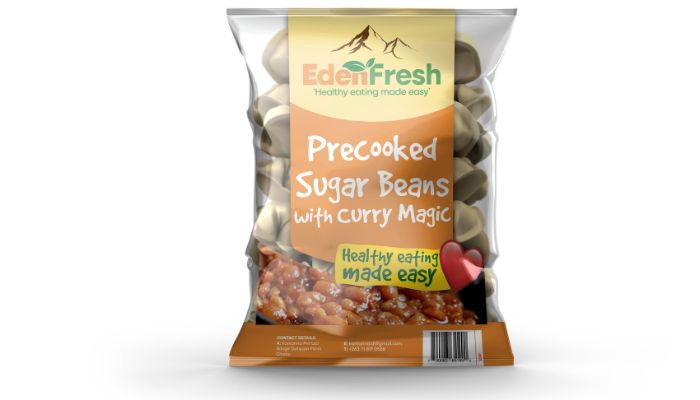
Website Design Trends from 1995 to 2023
October 6, 2023
FaceApp: Risks of using it in 2024
October 9, 2023|
Getting your Trinity Audio player ready...
|
For many businesses, the cost of product packaging is a major expense. From designing graphics and creating prototypes to pre-press production and mass production runs, the process of creating an effective package can be time-consuming and costly. Developing cost-effective strategies to make better packaging decisions can help reduce waste and improve customer satisfaction. We’ll discuss some key strategies that companies can use to create cost-effective packages without sacrificing quality or features.

Effective Strategies to Make Better Product Packaging Decisions
Always Keep Your Expenses in Mind
When developing product packaging, it’s important to always keep your expenses in mind. A good way to do this is to focus on the basics first and then add features as needed.
For example, if you’re creating a box for a product, start with the basic dimensions and materials before adding extras like graphics or special features. This will help keep costs down while still allowing you to create an effective package.
Understand Your Customer Needs
Understanding your customer needs is essential when creating cost-effective packages. Knowing what features they want and how they plan on using the product will help you design a package that meets their needs without going overboard on extras.
For instance, if customers are looking for easy access to the product, then you may want to design a package that allows them to open it quickly.
Choose the Right Product Packaging Materials
Choosing the right materials is essential for creating cost-effective packages. Different materials will have different costs associated with them, so it’s important to understand the differences and select the one that best suits your needs.
For example, cardboard boxes are usually more affordable than plastic ones, but they also tend to be less durable. It’s important to consider all of these factors when selecting the right material for your package.
Take Advantage of New Technologies
New technologies can help reduce packaging costs by streamlining processes and reducing waste. For instance, digital printing eliminates the need for pre-press production runs and allows companies to print custom graphics quickly and cost-effectively.
Additionally, automated packaging machines can help reduce labor costs by streamlining the process and reducing human error. Taking advantage of new technologies can help companies create cost-effective packages without sacrificing quality or features.
Modify Your Product Where Necessary
Sometimes, the best way to create cost-effective packages is to modify your product where necessary. For example, if your product is too large or bulky for a certain type of packaging, you can consider making some modifications so that it fits better.
This may involve changing the shape or size of the product, but it will ultimately help reduce costs while still ensuring that the package meets customer needs. Quantity ratios should also be considered, as purchasing more of a certain material can help reduce costs.
The Bottom Line on Product Packaging
By following these strategies, companies can reduce their packaging costs while still creating effective products that meet customer needs. From understanding customer needs to choose the right materials and taking advantage of new technologies, there are many ways to make better product packaging decisions in a cost-effective way.
FAQs on Effective Strategies to Make Better Product Packaging Decisions
Q: Why is product packaging important for businesses?
A: Product packaging is crucial for protecting items during shipping, attracting consumer attention, and conveying vital information. However, it can also be a significant expense for businesses.
Q: How can businesses develop cost-effective packaging strategies?
A: Businesses can create cost-effective packaging by focusing on essentials first and then adding features as needed. Understanding customer needs, choosing the right materials, utilizing new technologies, and considering product modifications are also key strategies.
Q: Why is it important to understand customer needs when designing packaging?
A: Understanding customer needs helps in designing packaging that meets their requirements without unnecessary extras. This ensures that the package serves its purpose effectively without incurring unnecessary costs.
Q: How does choosing the right packaging material impact costs?
A: Different materials come with varying costs. For example, cardboard is generally more affordable than plastic, but it may be less durable. Selecting the right material is crucial for balancing cost-effectiveness with package functionality.
Q: How can new technologies reduce packaging costs?
A: Technologies like digital printing and automated packaging machines streamline processes and reduce waste. They eliminate the need for pre-press production runs and minimize human error, ultimately contributing to cost-effective packaging.
Q: When is modifying the product necessary for cost-effective packaging?
A: Modifying the product may be necessary when it’s too large or bulky for a specific type of packaging. This might involve altering the product’s shape or size to ensure it fits appropriately, reducing costs while still meeting customer needs.
Q: What’s the overall impact of implementing these strategies on product packaging?
A: Implementing these strategies allows companies to reduce packaging costs while maintaining effective, customer-oriented packaging solutions. This comprehensive approach ensures that products are packaged efficiently and economically.
Q: What are the key benefits of developing cost-effective product packaging strategies?
A: Developing cost-effective product packaging strategies can help businesses reduce waste, improve customer satisfaction, and increase profits. By creating packages that are both affordable and effective, businesses can make their products more competitive in the marketplace.
Q: How can I keep my packaging expenses in mind?
A: One way to keep your packaging expenses in mind is to focus on the basics first and then add features as needed. For example, start with the basic dimensions and materials of the package before adding extras like graphics or special features. You can also consider using recycled or sustainable materials to reduce costs.
Q: How can I understand my customer needs when designing packaging?
A: To understand your customer needs, you can conduct customer surveys, focus groups, or interviews. You can also analyze customer reviews and feedback to learn more about what they like and dislike about your current packaging.
Q: What are some of the different product packaging materials available?
A: Some common product packaging materials include cardboard, plastic, paper, metal, and glass. Each material has its own advantages and disadvantages, so it’s important to choose the right one for your product. For example, cardboard is a versatile and affordable material, but it is not as durable as plastic.
Q: How can I take advantage of new technologies to create cost-effective packaging?
A: There are a number of new technologies that can help businesses create cost-effective packaging. For example, digital printing can eliminate the need for pre-press production runs and allow companies to print custom graphics quickly and cost-effectively. Additionally, automated packaging machines can help reduce labor costs by streamlining the process and reducing human error.
Q: How can I modify my product to create more cost-effective packaging?
A: Sometimes, the best way to create cost-effective packaging is to modify your product where necessary. For example, if your product is too large or bulky for a certain type of packaging, you can consider making some modifications so that it fits better. This may involve changing the shape or size of the product.
Q: What are some additional tips for creating cost-effective packaging?
A: Here are some additional tips for creating cost-effective packaging:
- Use standard packaging sizes and shapes. This will help you get the best possible price from your packaging supplier.
- Consider using recycled or sustainable materials. These materials are often more affordable than traditional materials, and they can help you reduce your environmental impact.
- Design your packaging to be easy to ship and store. This can help you save money on shipping and storage costs.
- Work with a reputable packaging supplier. A good packaging supplier can help you choose the right materials and design for your product, and they can also help you get the best possible price.
By following these tips, you can create cost-effective packaging that will protect your product and meet the needs of your customers.



